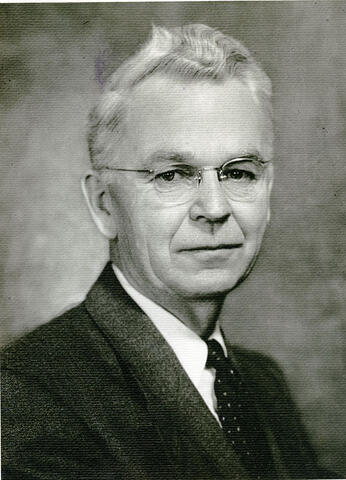
Title and statement of responsibility area
Titel
Dr. Jacob G. Rempel - Portrait
Algemene aanduiding van het materiaal
- Graphic material
Parallelle titel
Overige titelinformatie
Title statements of responsibility
Titel aantekeningen
Beschrijvingsniveau
Stuk
archiefbewaarplaats
referentie code
Editie
Editie
Edition statement of responsibility
Class of material specific details area
Statement of scale (cartographic)
Statement of projection (cartographic)
Statement of coordinates (cartographic)
Statement of scale (architectural)
Issuing jurisdiction and denomination (philatelic)
Datering archiefvorming
Datum(s)
-
nd. (Vervaardig)
Fysieke beschrijving
Fysieke beschrijving
1 photograph : b&w ; 20 x 26 cm
Publisher's series area
Title proper of publisher's series
Parallel titles of publisher's series
Other title information of publisher's series
Statement of responsibility relating to publisher's series
Numbering within publisher's series
Note on publisher's series
Archivistische beschrijving
Naam van de archiefvormer
Geschiedenis beheer
Bereik en inhoud
Head and shoulders image of Dr. Jake Rempel, Biology.
Bio/Historical Note: Having lost both parents and an older brother during the conflict and typhus that swept Mennonite colonies during the Russian Revolution in 1919, Dr. Jacob G. Rempel (b. 1903) and his brother David (b. 1899) emigrated to Canada, arriving in Rosthern, Saskatchewan, in July 1923. They spoke German, some Russian, but no English; and had the equivalent of $1.25 Canadian in funds. By 1928, however, Dr. Rempel had secured a three-year scholarship to the University of Saskatchewan, from which he graduated with the Governor General's Gold Medal and high honours in Biology in 1931. He joined the Biology department that year as an instructor and earned his MSc by 1933. He took a leave of absence in 1936 to attend Cornell University, earning his PhD in 1937. He remained with the U of S for the rest of his career, becoming a full professor by 1953 and being named Rawson Professor in 1962. Dr. Rempel retired in 1970. He made lasting contributions to science in several research areas, beginning his career with the study of the midge Chironomus hyperboreus in Prince Albert National Park. This led to work on chironomid (fish fly) taxonomy. Dr. Rempel then turned to biting flies: first to the ecology and control of blackflies, which adversely affected cattle populations; and then to mosquitoes, which were vectors of the virus causing the western equine sleeping sickness (encephalitis) which occurred as a pandemic in the late 1930s. Dr. Rempel closed off his distinguished research career with classic studies in insect embryology. He studied the development of the bertha army worm, two species of beetle, and the black widow spider. His last major contribution, The Evolution of the Insect Head: The Endless Dispute, was published a year before he died (1975). It clarified an issue that had elicited twelve different theories. Dr. Rempel contributed more than fifty publications. He won many honours. He was elected a Fellow of the Royal Society in 1956, and received the Centennial Medal in 1967 “in recognition of valuable service to the nation.” In 1971 he received the Gold Medal of the Entomological Society of Canada. Dr. Rempel was president of the Entomological Society of Saskatchewan and of the International Conference on Diseases of Nature Communicable to Man. He also served for ten years as associate editor of the Canadian Journal of Zoology, and for a similar period on the Advisory Panel on Entomology of the Defence Research Board of Canada. After his retirement, he moved to Victoria, but remained active in research until just before his death on 30 May 1976.
Aantekeningen
Materiële staat
Directe bron van verwerving
Ordening
Taal van het materiaal
Schrift van het materiaal
Plaats van originelen
Beschikbaarheid in andere opslagformaten
Restrictions on access
Termen voor gebruik, reproductie en publicatie.
Photographer: Unknown
Copyright holder: Unknown
Other terms: Responsibility regarding questions of copyright that may arise in the use of any images is assumed by the researcher.

